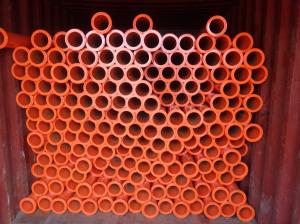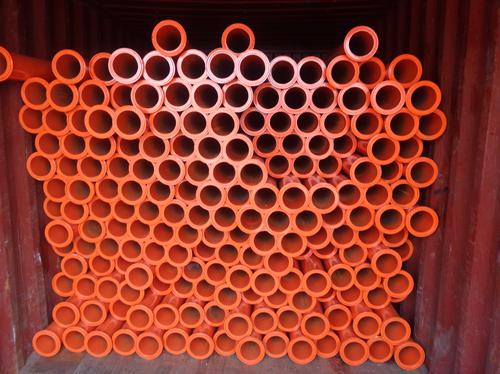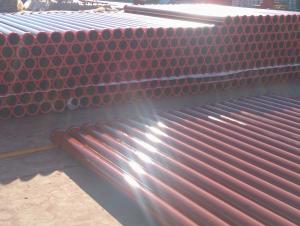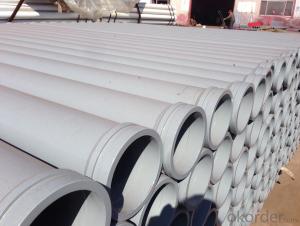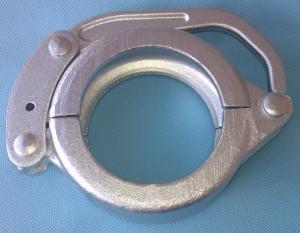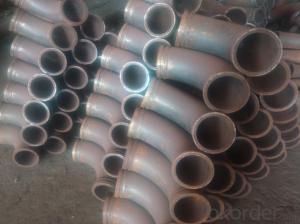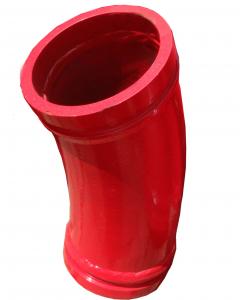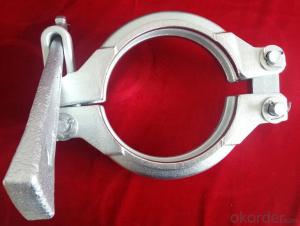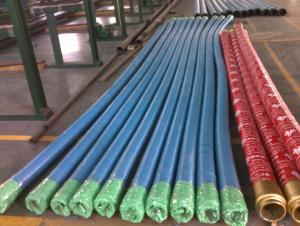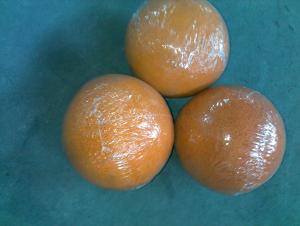CONCRETE PUMP DELIVERY PIPE WITH 175 Male and female Fange
- Loading Port:
- Tianjin
- Payment Terms:
- TT or LC
- Min Order Qty:
- 10 pc
- Supply Capability:
- 10000 pc/month
OKorder Service Pledge
OKorder Financial Service
You Might Also Like
Product Description:
1. Specification of Concrete Delivery Pipe
Materials: ST52
Concrete Pumping Capacity: about25, 000M3
Inner Diameter: 125mm
Outer Diameter: 133mm
Thickness: 5.0mm
Length: 3000mm
2. Application of Concrete Delivery Pipe
Widely used on concrete pump truck, concrete placing boom, trailer concrete pump etc.
Our concrete delivery pipes have been successfully exported to many countries from 1998, Our main markets as below: Middle East, Southeast Asia, America, Brazil, Italy, Russia, South Africa etc. Aiming at the largest concrete pump parts manufacturer, and reliable, professional supplier in China, we can supply concretepump elbows, delivery pipes, casting or forging couplings, end rubber hoses, rubber piston,
tungsten wear plates, delivery cylinders, and other hydraulic parts, one stop service for your concrete pump
parts and accessory business.
3. Package and Delivery of Concrete Pump Elbow
Every 260pcs put in one 20feet container.
4. FAQ
Q1: Why buy Materials & Equipment from us?
A1: All products have its ISO certifications, adheres to the highest standards and a commitment to supply chain safety and customer satisfaction.
Q2: How do we guarantee the quality of our products?
A2: We have established an advanced quality management system which conducts strict quality tests at every step, from raw materials to the final product. At the same time, we provide extensive follow-up service assurances as required.
Q3: How soon can we receive the product after purchase?
A3: Within three days of placing an order, we will begin production. The specific shipping date is dependent upon international and government factors, but is typically 10 to 30 workdays.
Q4: If we can produce some CONCRETE PUMP DELIVERY PIPE WITH 175 Male and female Fange according to customers request?
A4: Yes, we can produce CONCRETE PUMP DELIVERY PIPE WITH 175 Male and female Fange according to the difference country situations and different concrete pump to make it suitable to the market and customers. We have very professional technical team to make the design.
Q5: How to make a quick resolution for after service?
A5:We have overseas branches all-around of world, IF needed, the seller shall dispatch 2 engineers to the buyer's site for supervision of training. The buyer shall make available of necessary facilities &skilled personnel at site for training.
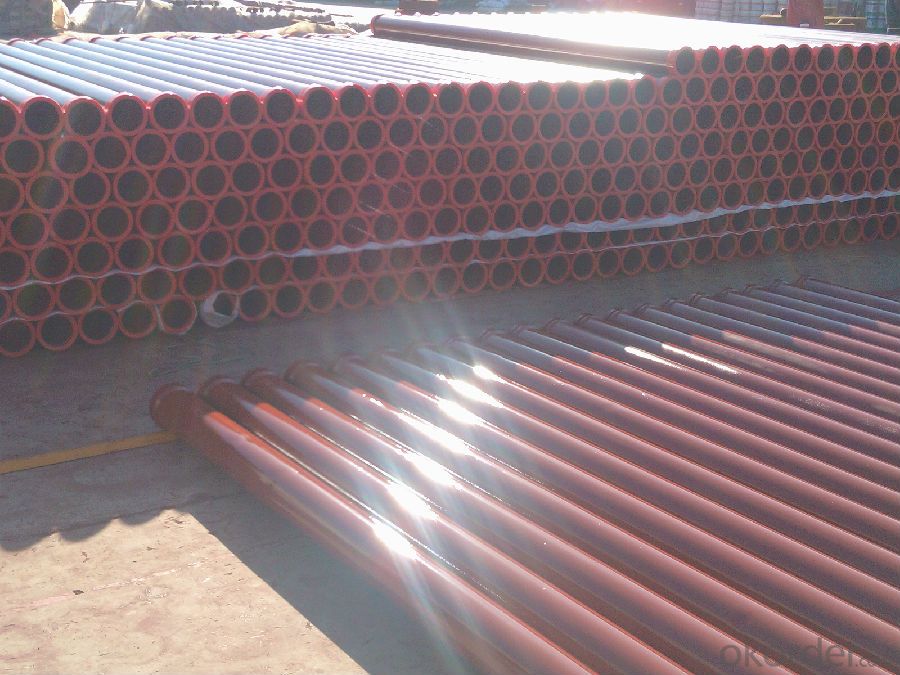
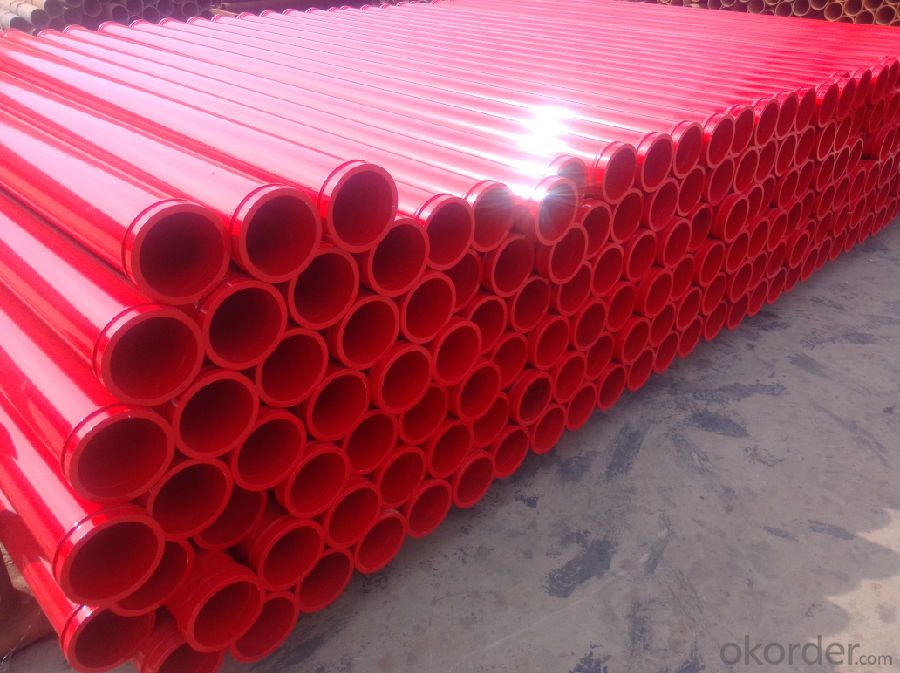
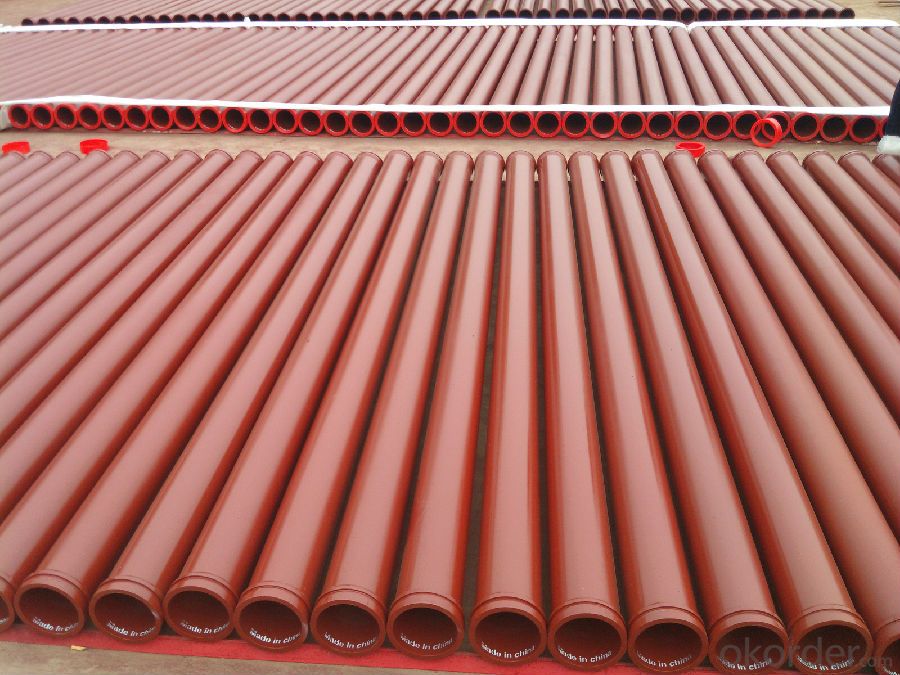
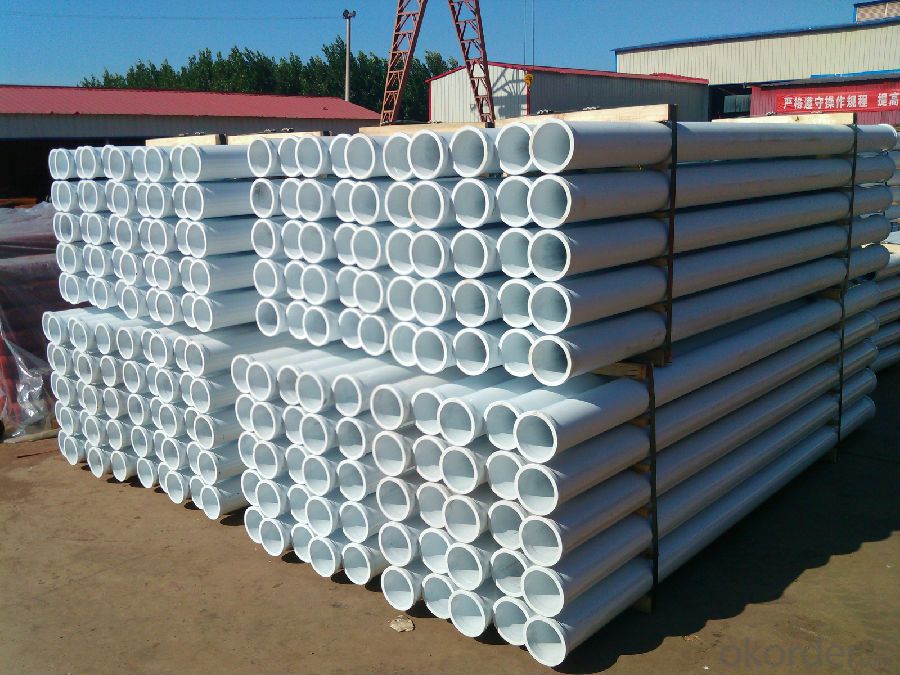
- Q: How can one identify the correct type of rubber seals or gaskets for concrete pump spare parts?
- To identify the correct type of rubber seals or gaskets for concrete pump spare parts, one should consider several factors. Firstly, it is important to know the specific model and make of the concrete pump to ensure compatibility. Additionally, one should evaluate the application requirements, such as the pressure and temperature conditions the seals or gaskets will be exposed to. Considering the material compatibility with the fluids or chemicals being pumped is also crucial. Consulting the manufacturer's specifications or seeking expert advice can provide further guidance in identifying the correct type of rubber seals or gaskets for concrete pump spare parts.
- Q: What is the purpose of a concrete pump electric motor?
- The purpose of a concrete pump electric motor is to provide the necessary power and energy to operate the concrete pump. The motor converts electrical energy into mechanical energy, which is then used to drive the pump's hydraulic system. This hydraulic system is responsible for sucking in concrete from the hopper and pumping it through the pipes to the desired location. The electric motor ensures a smooth and efficient operation of the concrete pump, allowing for precise placement of the concrete and increased productivity on construction sites. Additionally, the use of an electric motor eliminates the need for manual labor and reduces emissions compared to traditional diesel-powered pumps, making it a more environmentally friendly option.
- Q: What are the signs of a malfunctioning concrete pump control valve?
- There are various indications that a concrete pump control valve is malfunctioning. Some of the most frequently observed signs are as follows: 1. Concrete flow inconsistency or unevenness: A malfunctioning control valve can cause concrete to flow in an irregular manner, resulting in uneven distribution or even complete cessation of flow. 2. Fluctuating pressure: When the control valve is not functioning properly, it can cause pressure fluctuations in the concrete pump. This can lead to inconsistent output and potential damage to the pump or other components. 3. Heightened noise levels: An improperly functioning control valve can generate unusual or excessive noise during operation. This may indicate internal issues or improper valve functioning. 4. Leakage or dripping: The presence of leaks or drips around the valve or its connections is another indication of a malfunctioning control valve. This can suggest seal failure or other problems that require attention. 5. Difficulties in pump control: When the control valve is not operating correctly, it can become challenging to control the pump's operations. This can include problems with starting or stopping the pump, as well as controlling the speed and direction of concrete flow. 6. Increased energy consumption: A malfunctioning control valve may result in heightened energy consumption as the pump compensates for the valve's inefficiencies. This can lead to higher operating costs and reduced overall efficiency. If any of these signs are observed, it is crucial to address the issue promptly. Malfunctioning control valves can lead to costly repairs, downtime, and potential safety hazards. It is advisable to consult a professional technician or service provider who can diagnose and resolve the problem.
- Q: What are the different types of concrete pump pistons?
- In the construction industry, various concrete pump pistons are frequently utilized. These encompass the following: 1. Single-acting pistons: Smaller concrete pumps employ these pistons with a single working side. They propel the concrete out of the cylinder during the forward stroke and rely on gravity to retract the piston during the return stroke. 2. Double-acting pistons: Larger concrete pumps utilize these pistons with two working sides. They push the concrete out during the forward stroke and pull it back during the return stroke, thereby enhancing the pumping process's efficiency. 3. S-tube pistons: Trailer-mounted concrete pumps commonly employ these pistons, which are shaped like an S. They assist in regulating the concrete flow by directing it through a series of valves and pipes. 4. Rock valve pistons: These pistons are specifically designed for pumping concrete with larger aggregates. With their sturdy design, they can handle the more abrasive nature of such materials. 5. Gate valve pistons: These pistons employ a gate valve system to manage the concrete flow. They are frequently used in high-pressure applications and provide precise control over the pumped concrete's quantity. In summary, the selection of a concrete pump piston depends on various factors specific to the construction project, including the pump's size, the type of concrete being pumped, and the desired flow rate and pressure.
- Q: Are there any specific cleaning procedures for concrete pump spare parts?
- Yes, there are specific cleaning procedures for concrete pump spare parts. It is important to ensure that these parts are clean and free from any dirt or debris to maintain their efficiency and longevity. Here are some general guidelines to follow when cleaning concrete pump spare parts: 1. Safety First: Before starting the cleaning process, make sure to wear appropriate personal protective equipment (PPE) such as gloves and safety goggles to protect yourself from any potential hazards. 2. Disconnect Power: Before cleaning any electrical or mechanical parts, make sure to disconnect the power supply to avoid any accidents. 3. Remove Excess Dirt: Use a brush or a dry cloth to remove any loose dirt or debris from the surface of the spare parts. This will make the cleaning process more effective. 4. Use Appropriate Cleaning Solution: Depending on the type of spare parts and the level of dirt, choose an appropriate cleaning solution. Mild detergents or soapy water are generally safe to use. Avoid using harsh chemicals or solvents that may damage the parts. 5. Scrub and Rinse: Dip a clean cloth or sponge into the cleaning solution and gently scrub the spare parts to remove any stubborn dirt or stains. Rinse the parts thoroughly with clean water to remove any residue of the cleaning solution. 6. Dry Completely: After rinsing, make sure to dry the spare parts thoroughly using a clean cloth or by air-drying. Moisture can lead to rust or corrosion, so it is important to ensure complete drying. 7. Lubricate Moving Parts: If the spare parts have any moving components, such as bearings or gears, apply an appropriate lubricant to ensure smooth operation. This will help prevent wear and tear and extend the lifespan of the parts. 8. Regular Maintenance: To keep the concrete pump spare parts in optimal condition, it is recommended to perform regular cleaning and maintenance. Inspect them periodically for any signs of damage or wear and replace them if necessary. By following these specific cleaning procedures, you can effectively clean and maintain the concrete pump spare parts, ensuring their reliability and longevity.
- Q: How does a concrete pump piston work?
- By creating a back-and-forth movement, the concrete pump piston propels the concrete through the pump and into the desired location. The piston is a cylindrical part that fits snugly inside a cylinder and is connected to a rod, which is linked to a hydraulic system. When the hydraulic system is activated, it propels the rod forward, thereby causing the piston to move in the same direction. As the piston advances, it creates a vacuum behind it, which draws the concrete into the cylinder through an inlet valve. Once the piston reaches the end of its forward stroke, the hydraulic system changes its direction, retracting the rod and causing the piston to move backward. Consequently, this action closes the inlet valve and opens an outlet valve, enabling the concrete to be forced out of the cylinder and into the delivery line. The reciprocating motion of the piston, combined with the alternating opening and closing of the inlet and outlet valves, facilitates a continuous flow of concrete through the pump. This process is rapidly repeated, ensuring efficient and consistent pumping of concrete to the desired location.
- Q: Can concrete pump spare parts be purchased online?
- Indeed, online purchases of concrete pump spare parts are possible. Numerous online platforms and websites cater specifically to the sale of construction equipment and spare parts, including those for concrete pumps. These digital stores present a comprehensive assortment of options and brands, enabling customers to peruse and choose the precise spare parts required for their concrete pump. Moreover, online buying grants the convenience of price comparison, perusal of customer reviews, and doorstep delivery of the spare parts. Nevertheless, it remains imperative to ascertain the authenticity and dependability of the online store prior to making a purchase, guaranteeing the acquisition of genuine and top-notch spare parts.
- Q: What is the importance of a good quality concrete pump seal?
- A good quality concrete pump seal is important because it helps to prevent leakage and ensure the smooth and efficient operation of the pump. It helps to maintain the pressure and flow of the concrete, reducing the risk of blockages or malfunctions. A reliable seal also extends the lifespan of the pump by minimizing wear and tear on the internal components. Ultimately, a good quality concrete pump seal is crucial for achieving high-quality and consistent results in construction projects.
- Q: How can one determine the correct weight and balance requirements for concrete pump spare parts?
- To ascertain the appropriate weight and balance specifications for concrete pump spare parts, several factors must be taken into account. First and foremost, consulting the manufacturer's specifications and guidelines specific to the concrete pump model is of utmost importance. These documents typically contain comprehensive information regarding the weight and balance requirements for each spare part. Secondly, it is essential to comprehend the function and purpose of each spare part. Different components vary in weight and can significantly impact the overall balance of the pump. For example, larger elements like booms or outriggers may necessitate precise weight distribution to ensure operational stability. Moreover, considering the intended usage and environmental conditions of the concrete pump is imperative. If the pump is expected to operate in challenging terrains or extreme weather, additional weight might be necessary to enhance stability. In addition to the manufacturer's guidelines, seeking counsel from experts or engineers knowledgeable about concrete pumps can provide invaluable insights. These professionals can analyze the specific requirements of the pump and offer guidance on the appropriate weight and balance specifications for the spare parts. Lastly, conducting thorough testing and inspections after installing any spare parts is crucial. This ensures compliance with the weight and balance requirements and allows for any necessary adjustments to be made. In conclusion, determining the correct weight and balance requirements for concrete pump spare parts necessitates a combination of understanding manufacturer guidelines, considering the purpose and conditions of the pump, seeking expert advice, and performing comprehensive testing and inspections.
- Q: How long do concrete pump spare parts typically last?
- The lifespan of concrete pump spare parts can vary depending on several factors. Generally, high-quality spare parts can last anywhere between 1,000 to 2,500 working hours. However, this estimate is influenced by factors such as the type and brand of the spare parts, the frequency of use, the quality of maintenance, and the working conditions in which the concrete pump operates. Some concrete pump spare parts may have a shorter lifespan due to the wear and tear they experience during operation. For instance, wear parts like rubber seals, pistons, and wear plates are more susceptible to damage and may need to be replaced more frequently. On the other hand, structural components like pipes, hoses, and hydraulic cylinders tend to have a longer lifespan. Proper maintenance and regular inspections play a crucial role in extending the lifespan of concrete pump spare parts. Adequate lubrication, cleaning, and timely replacement of worn-out parts can significantly enhance their durability. Additionally, the expertise and skill of the operator also influence the lifespan of the spare parts since improper use or mishandling can lead to premature failure. Overall, while the average lifespan of concrete pump spare parts can be estimated, it is important to consider the specific circumstances and conditions in which the concrete pump operates to determine their actual longevity. Regular maintenance, high-quality parts, and proper usage will ultimately contribute to maximizing the lifespan of concrete pump spare parts.
Send your message to us
CONCRETE PUMP DELIVERY PIPE WITH 175 Male and female Fange
- Loading Port:
- Tianjin
- Payment Terms:
- TT or LC
- Min Order Qty:
- 10 pc
- Supply Capability:
- 10000 pc/month
OKorder Service Pledge
OKorder Financial Service
Similar products
Hot products
Hot Searches
Related keywords
